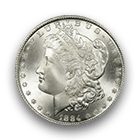“When opportunity presents itself, grab it. Hold on tight and don’t let go.” ~Celia Cruz
Celia Cruz was a Cuban singer known as the queen of salsa and the first Afro-Latina featured on a U.S. coin. As a child, she was told singing wouldn't be a stable career option, but she knew she had a gift. So she ignored her critics and took every opportunity that came her way, building an incredibly successful career for herself.
Cruz grew up in Havana, Cuba, in a house with 14 kids. Her love for singing started at a young age, as she would help sing the younger kids to sleep. She loved performing and was exposed to many musical styles thanks to Cuba's rich musical diversity. Her father disapproved of singing as a stable career and encouraged her to become a teacher instead. However, once her professor told her she had real talent and could make more in one day as a singer than she could in a month as a teacher, Cruz transferred to the National Conservatory of Music. Here she studied music theory, voice, and piano.
After graduating from the conservatory, Cruz's cousin took her to a radio station to compete in a singing contest. She came in first place and went on to compete in many more, usually winning. At the time, radio was a primary source of entertainment, so these contests were great exposure for Cruz. That exposure helped get her accepted by multiple singing groups, and she started getting the opportunity to perform as part of some of the most popular cabarets in Cuba.
Cruz's big break came in 1950, when a spot opened up in the popular Cuban band Sonora Matancera. She auditioned for the role and was asked to join as a lead singer, becoming the band's first Black frontwoman. Initially, she was not popular with the public, but that changed once she recorded her first song with the group, which was a hit. She spent 15 years with Sonora Matancera, earning her first gold record, visiting the U.S. for the first time, appearing in movies, touring Latin America, and becoming a staple performer at the Tropicana night club.
In 1959, while the band was away performing in Mexico, Fidel Castro seized power in Cuba. Cruz returned home to find her city in turmoil. Even though she knew it could cost her career and her freedom, she began to speak out, openly opposing Castro and his communist leadership. Because of this, when she left the country for a residency at a nightclub in Mexico City, she was never allowed to return. This deeply saddened Cruz, who felt so connected to her home, and she tried many times to return, but was always denied.
After being denied entry back into Cuba, Cruz bought a house in New Jersey and became an American citizen. She signed with a new record label, Fania Records, the top salsa recording label. After joining the label in 1973, Cruz started collaborating with other artists and joined the salsa supergroup, the Fania All-Stars. She also released her first studio album for Fania. The album was a collaboration with the label's founder, Jonny Pacheco, and was a huge commercial success, giving her the opportunity to collaborate with other big Latin artists.
As her popularity continued to grow, Cruz began to build her brand. She quickly became known not just for her powerhouse voice and joyful stage presence, but also for her signature flamboyant style, ruffled rumba dresses, big wigs, and high heels. She continued collaborating with other artists and began hitting personal career milestones. In 1987, she performed a concert in Santa Cruz de Tenerife with 250,000 attendees, a world record for the largest free-entry concert. In 1990, she won her first American Grammy. In 2000, she won her first Latin Grammy, winning her second the following year. In 2002, Cruz took a chance and experimented with a new music style, a modern variant of Caribbean rhythms influenced by rap and hip hop, and won her second American and third Latin Grammy.
One of the highlights of Cruz's career came in 1990 when she had the opportunity to return to Cuba to perform on the Guantanamo Bay Naval Base. She was only allowed on the base; she couldn't pass the barbed wire fence to go further into her home country, but she collected a bag of Cuban soil to take home to be buried with. Cruz has also been honored with a star on the Hollywood Walk of Fame, an induction into the Latin Music Hall of Fame and International Latin Music Hall of Fame, an exhibit at the Smithsonian, and she was the first recipient of the American Society of Composers, Authors, and Publishers Latin Heritage Award.
The design for the Celia Cruz quarter was discussed at the Citizens Coinage Advisory (CCAC) Meeting on March 1, 2023. The committee felt that choosing a dynamic and energetic design for the coin was important because they wanted to represent Cruz's personality and performance style. She famously said, "When people hear me sing, I want them to be happy, happy, happy!" She was fun to watch and could grab your attention even through a screen. The committee liked this design because it embodied those qualities; it was joyful, fun, and attention-grabbing.
The quarter's design also highlights Cruz's signature style and catchphrase. She is pictured in a ruffled rumba-style, flamboyant dress with a big wig. She is ready to perform, holding a microphone, arm outstretched, inviting you in. Next to her is her catchphrase, “¡Azúcar!,” which means sugar in Spanish. ¡Azúcar! was Cruz's battle cry, which she used in her songs, concerts, and speeches.







 Copper & Nickel
Copper & Nickel
 Silver Coins
Silver Coins
 Gold Coins
Gold Coins
 Commemoratives
Commemoratives
 Others
Others
 Bullion
Bullion
 World
World
 Coin Market
Coin Market
 Auctions
Auctions
 Coin Collecting
Coin Collecting
 PCGS News
PCGS News